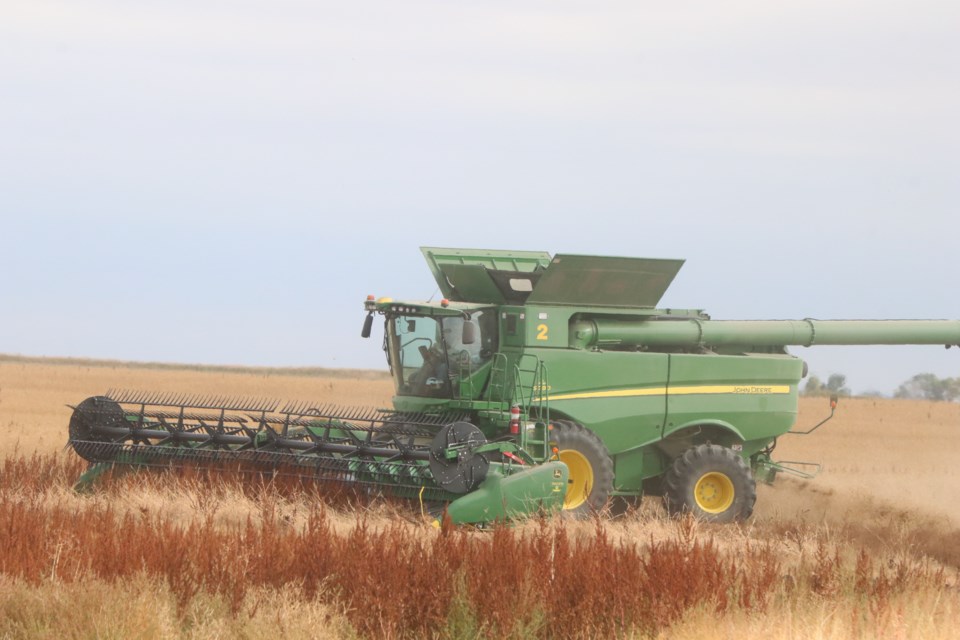WEYBURN - Producers in the southeast are moving along with harvest, according to the crop report for the period of August 1 to August 7. The region currently has four per cent of harvest complete for the year, in line with provincial progress. Producers that have not started yet are watching their crop staging closely.
Producers have been making progress harvesting fall rye, with 48 per cent of the crop harvested for the year. Harvest of pulse crops (field peas and lentils) is also advancing in the region, with 25 per cent of field peas and 19 per cent of lentils harvested for the year. Other crops, such as flax, chickpeas and canary seed have not been harvested yet.
Producers are finishing their haying operations in the southeast. Alfalfa is estimated to yield 1.4 tons per acre and greenfeed is estimated to yield 2.0 tons per acre. Wild hay is estimated to yield 0.9 tons per acre. Silage yields are estimated at 4.8 tons per acre. Producers are evaluating their feed supplies for winter and are considering using grain crops as feed.
Rain showers moved through the region this past week, with significant moisture received in some locations. Twenty-six mm was received in the Frobisher area, while other areas received only trace amounts. Soil moisture in the southeast continues to be limited. Seven per cent of cropland has adequate topsoil moisture, 50 per cent is short and 43 per cent is very short. Five per cent of hay and pasture land has adequate topsoil moisture, 31 per cent is short and 64 per cent is very short. Producers are hoping for significant moisture after harvest to replenish soil moisture levels.
Crop damage this past week is due to drought and heat stress, grasshoppers, gophers and flea beetles. Producers are busy checking crop maturity, moisture levels, preparing for harvest, and marketing cattle.



.png;w=120;h=80;mode=crop)
